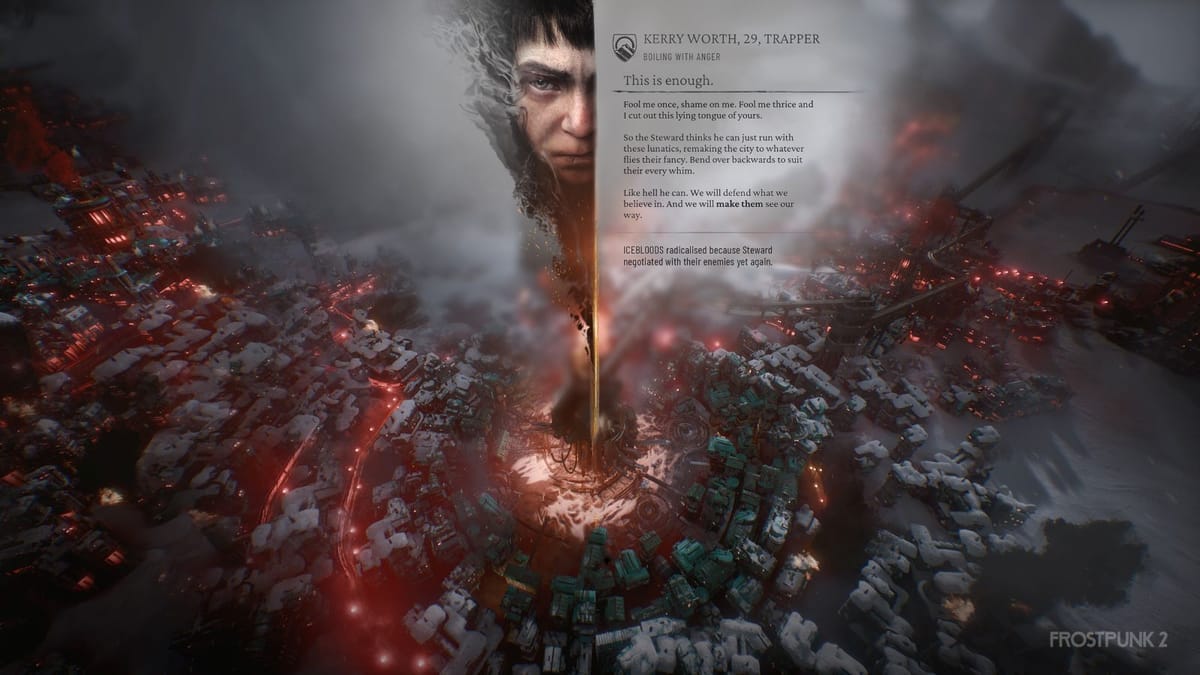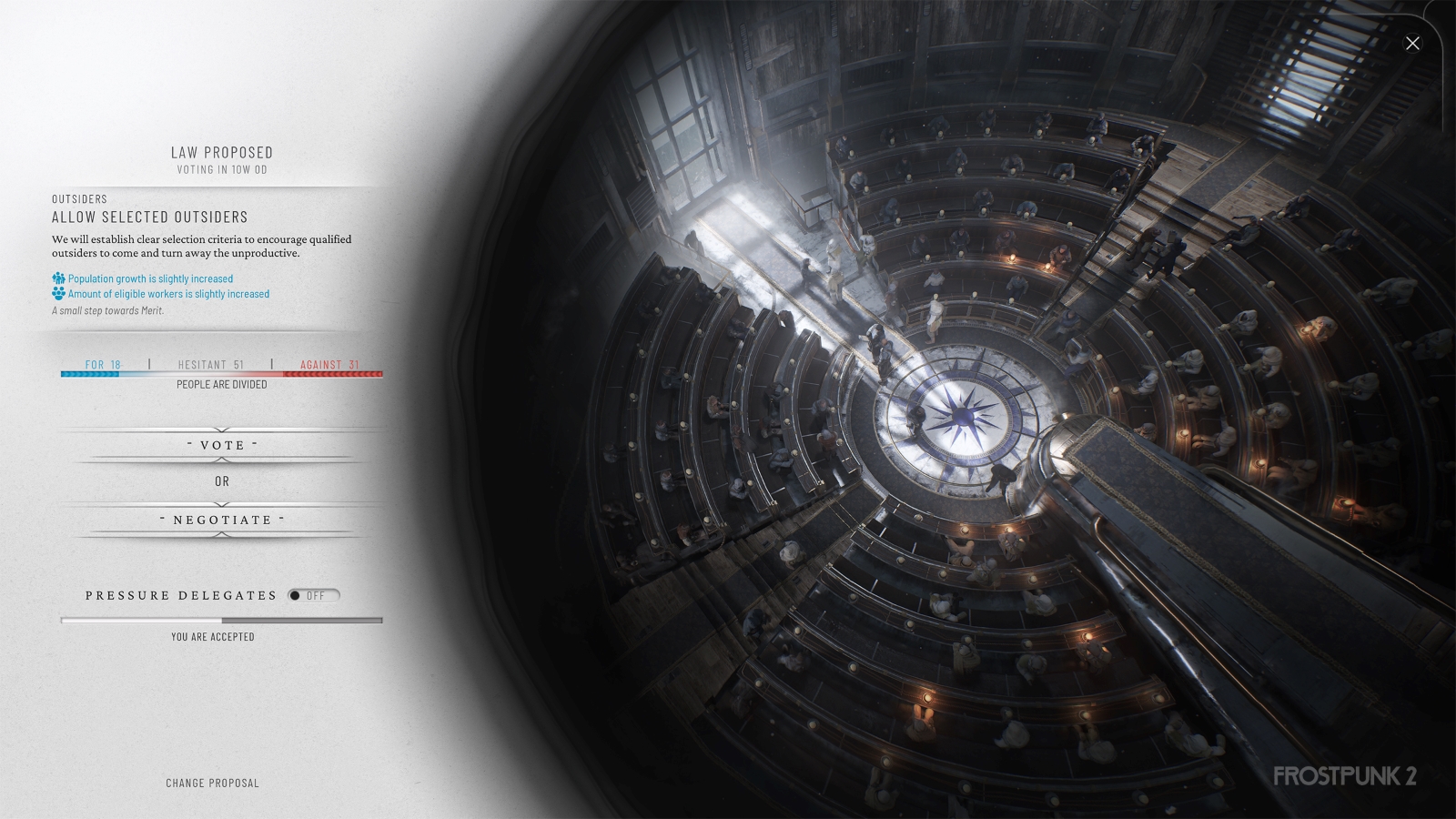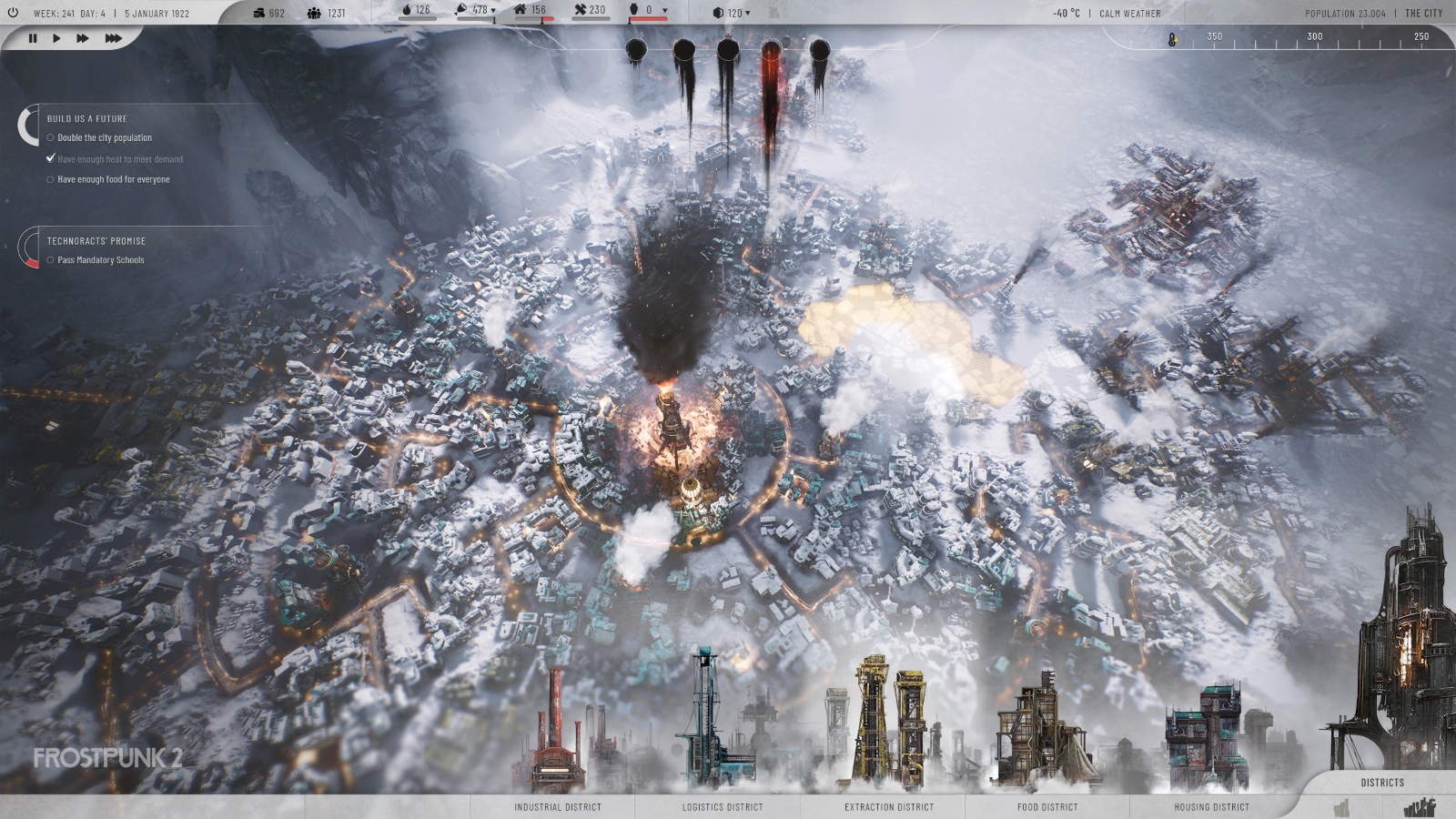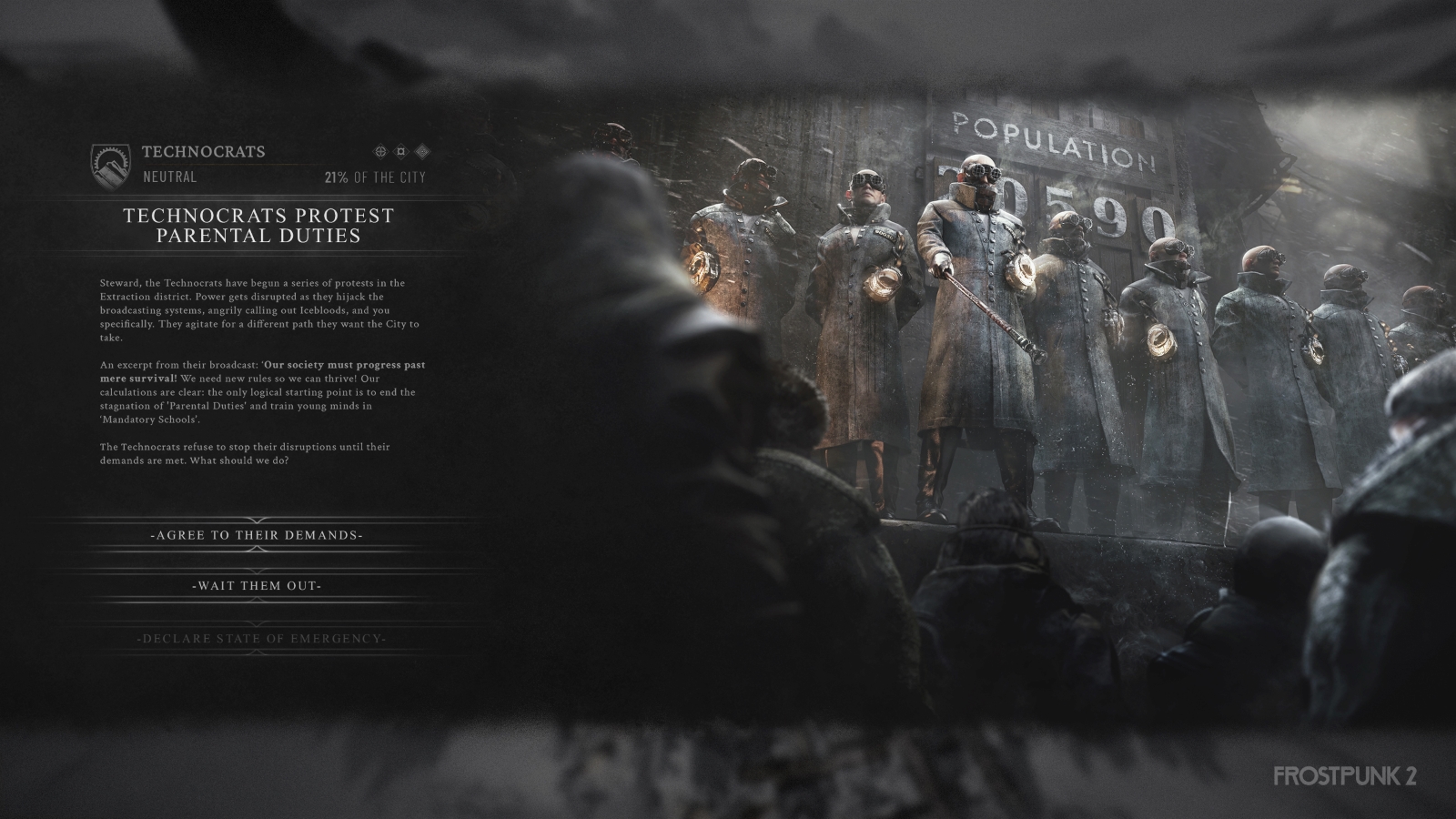
All images courtesy of 11 Bit Studios.
As noted in our review of Frostpunk: The Board Game, the first entry in 11 Bit Studios’ series was about attrition and human rights. In a worst-case climate change scenario, you’re performing triage, lopping off the kindnesses of the modern world, putting welfare and social protections to the sword. All the while, there’s an unspoken hope that, in a gentler time and warmer place, those values might return.
In Frostpunk 2, those gentler times have come, and players will soon realize that reconstructing those values is much harder than preserving them. It’s been thirty years since the hellish blizzard (the “final storm”) that brought the curtain down on the first game. Now you have to grapple with a lean, hungry generation with extreme ideas about efficiency, autonomy, innovation, and evolution.
You’re no longer an autocrat, but a steward, which is more like a prime minister. You preside over a city council, whose members shuffle and rabble-rouse around an animated chamber like Roman senators in parkas.

Silly as that looks, it provides an intimate touch the presentation needs. While you’ll still get “thought bubbles” from your citizens, the game’s scale has exploded. No more grey masses of coal miners or guttering lamps. Now, your old colony’s a single district, its people mere specks of dust in the cogs of a great machine. The separate technology and law tracks have been rolled into a radial “idea tree,” which drives home the amount of abstraction taking place.
Sometimes you get notifications which give you a names, faces, occupations, and streams of consciousness. Like Upton Sinclair characters, they’re well-written figures and stand up well enough, but they’re broad—sketches from a pamphlet or a manifesto.

The new and wider scope of Frostpunk 2 also applies to its chronology. Instead of days, you cover weeks and months and years—long enough to see council factions percolate, crystallize, and splinter. This preview of the game’s sandbox mode (named the “Utopia Builder”) showcased four: the Foragers, the Engineers, the Technocrats, and the Icebloods.
The first two represent what could almost be called ethnic groups. Engineers descend from the colonies and favor meticulously planned societies. The Foragers’ ancestors toughed it out in the wilderness without the heat of the generators and thus value self-reliance.
The Technocrats and Icebloods, which arose after a dev-induced time skip of around two years, are like the lunatic fringes of those groups. Technocrats, as their name suggests, push for every innovation, even if that equates to drums full of toxic waste. Icebloods seem to espouse a “weak men produce bad times” mantra. Art for the Technocrats depicts an aloof intelligentsia, masked and kitted with the steampunk equivalent of Patagonia vests and pocket protectors. The Icebloods, on the other hand, are stripped to the waist, enduring the rime and frost like Stoic philosophers.
Overall, one is left with the distinct impression that these are Tea Partiers, MAGAhatters, Musk-style natalists, etc. in party hats. Punting for either of them on child education felt a lot like an Objectivist versus Southern Democrat debate, with hyper-capitalist public schools on one side and evangelical homeschooling on the other.
Yes, “punting” is the right verb. Make no mistake: you’re playing political football. Whether it’s due to pressures outside your chamber or a desire to spearhead a shiny initiative, you’ll need to trade flesh with these people. That may include striking down old laws a faction hates more than your new one (stands to reason there are single-issue voters in Frostlandia, too).
It’s the material for a political thriller and, within that landscape, it feels (so far) more House of Cards than Snowpiercer.

In that same vein, maybe holding onto power will be the chief antagonist of Frostpunk 2. 11 Bit Studios assured us that starvation, cold, and the mob will be ever-present dangers, but they’ll be secondary to social failures.
In terms of central conflict, Frostpunk straddled the line between “man versus man” and “man versus nature,” but its follow-up definitely falls on the side of the former. There’s no doubt that they’ve preserved the series’ overall draw, its black commentary and grueling interpretation of the city sim, but there’s now something bigger and more glorious to lose.
